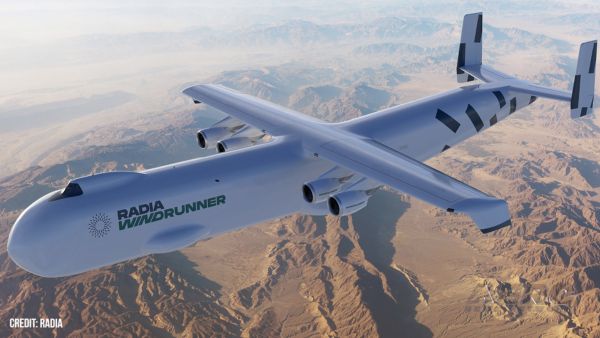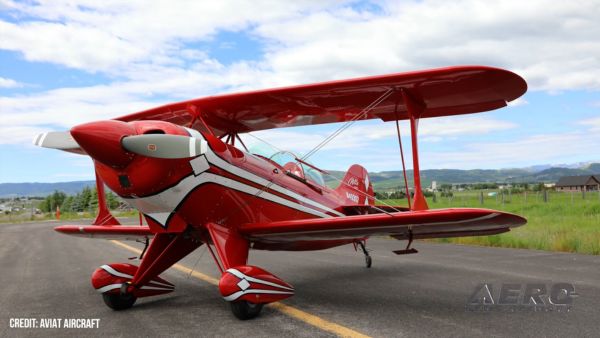Area Restricted For UAV Operations
Call it a temporary, temporary flight restriction. After much
prodding from aviation advocates like the AOPA, the FAA announced
the agency has shrunk the 300-mile long, 17-mile wide restriction
to less than half that length.
The TFR is still in effect along the Arizona-Mexico border,
approximately 100 miles west from the New Mexico border with
Arizona -- which doesn't make the organization happy.
"We're certainly pleased that the FAA has released airspace that
the Department of Homeland Security is not currently using for UAV
operations," said Melissa Rudinger, AOPA vice president of
regulatory affairs. "However, we still object to the use of TFRs
for long-term UAV operations."
AOPA has been pushing security officials
to find alternatives to removing large chunks of airspace from
civilian use to protect UAV flights. Even as amended,
the TFR is in effect until at least December, and its likely to be
renewed ad naseum.
Phil Boyer and company contend that takes the "temporary" out of
"temporary flight restriction."
"If you're going to take airspace for the long term, you should
go through the rulemaking process. And that includes opportunity
for public review and comment," said Rudinger.
The TFR is in effect so the Department of Homeland Security can
operate UAV's along the border, searching for illegal immigrants
and smugglers. AOPA says the government claims the restrictions to
GA operations are necessary to keep UAVs from accidentally running
into manned aircraft (and, to be fair, vice versa.)
"Frankly, we don't believe that airspace should be walled off
simply because UAVs can't play with the rest of us," said
Rudinger.
NOTAM Number:
FDC 6/1422
Issue Date: February 03, 2006 at 19:14 UTC
Location: Southern U.S. Border, Department of
Homeland Security (DHS), Nogales, Arizona
Beginning Date and Time: February 04, 2006 at 0:00
UTC
Ending Date and Time: December 31, 2006 at 15:00
UTC
Reason for NOTAM: Temporary flight restrictions
for Special Security Reasons
Type: Security
Replaced NOTAM(s): N/A
Pilots May Contact: Albuquerque (ZAB) Center,
505-856-4591
Affected Area(s)
Area 1
Airspace Definition:
Region bounded by:
Latitude: Longitude:
31�36'55"N 111�06'00"W
31�36'55"N 110�45'02"W
31�24'00"N 110�45'02"W
31�24'00"N 110�00'02"W
31�35'00"N 110�00'02"W
31�34'59"N 109�09'16"W
31�30'00"N 109�21'12"W
31�20'00"N 109�21'12"W
31�20'00"N 110�00'02"W
31�20'00"N 110�45'02"W
31�20'00"N 111�04'30"W
31�22'05"N 111�11'12"W
31�36'55"N 111�06'00"W
Altitude: From 12000 feet MSL to 14000 feet MSL,
inclusive
Effective Date(s):
February 04, 2006 at 0:00 UTC (February 03, 2006 at 17:00
MST) - December 31, 2006 at 15:00 UTC (December 31, 2006 at 8:00
MST)
Area 2
Airspace Definition:
Region bounded by:
Latitude: Longitude:
31�36'55"N 110�45'02"W
31�36'55"N 110�30'00"W
31�29'00"N 110�30'00"W
31�29'00"N 110�11'00"W
31�35'00"N 110�11'00"W
31�35'00"N 110�00'02"W
31�24'00"N 110�00'02"W
31�24'00"N 110�45'02"W
31�36'55"N 110�45'02"W
Altitude: From 12000 feet MSL to 14000 feet MSL,
inclusive
Effective Date(s):
February 04, 2006 at 0:00 UTC (February 03, 2006 at 17:00
MST) - December 31, 2006 at 15:00 UTC (December 31, 2006 at 8:00
MST)
Operating Restrictions and Requirements
No pilots may operate an aircraft in the areas covered by this
NOTAM (except as described).
R2312 is excluded from Area 2. Effective Daily 00:00 to
15:00 UTC (17:00 to 08:00 Local) and other times by NOTAM.
Except as specified below and/or unless authorized by
ATC:
1. An ATC clearance into special use airspace does not
constitute authorization to operate within the airspace defined by
this NOTAM.
2. All aircraft entering or exiting the TFR must be on a
discrete code assigned by an Air Traffic Control (ATC) facility.
Aircraft must be squawking the discrete code at all times while in
the TFR.
3. All aircraft entering or exiting the TFR must remain in
two-way radio communications with ATC.
4. Area 2 is not active when any of the following areas are
active: R2303A, R2303B, or R2303C.
5. ATC may provide flight advisories to aircraft in the TFR
concerning national security operations.
Other Information:
ARTCC: ZAB - Albuquerque Center
Point of Contact: System Operations Support Center
Telephone 202-267-8276
Authority: Title 14 CFR section 99.7
FMI: www.tfr.faa.gov,
Depicted TFR data may not be a complete listing. Pilots should not
use the information on this website for flight planning purposes.
For the latest information, call your local Flight Service Station
at 1-800-WX-BRIEF.
 ANN's Daily Aero-Term (06.04.25): NORDO (No Radio)
ANN's Daily Aero-Term (06.04.25): NORDO (No Radio) ANN's Daily Aero-Linx (06.04.25)
ANN's Daily Aero-Linx (06.04.25) Airborne 06.04.25: G100UL Legal Decision, FAA v Starship, Laser Conviction
Airborne 06.04.25: G100UL Legal Decision, FAA v Starship, Laser Conviction Airborne-NextGen 06.03.25: Hermeus Quarterhorse, VFS Forum, VX4 eVTOL
Airborne-NextGen 06.03.25: Hermeus Quarterhorse, VFS Forum, VX4 eVTOL ANN FAQ: Q&A 101
ANN FAQ: Q&A 101


